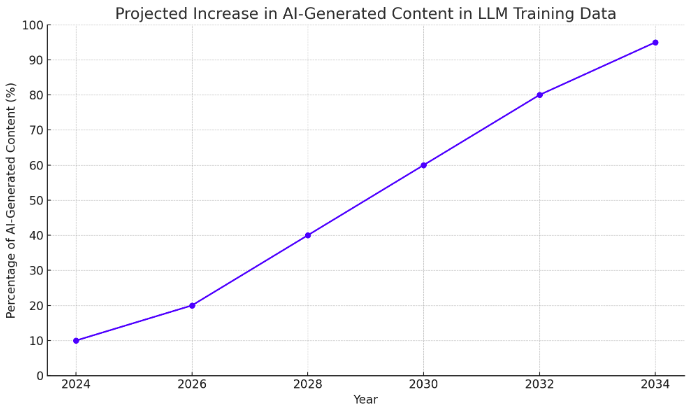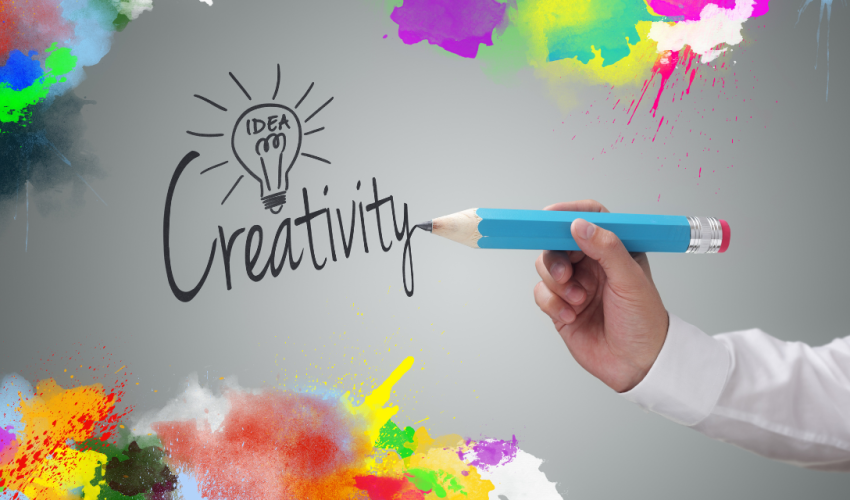As we embark on the exploration of AI-generated content’s integration into large language models (LLMs), it’s imperative to scrutinize the trajectory we’re on, the potential dangers it harbors, and how it could shape the innovative and creative capacities of AI in the future. The rapid advancement of artificial intelligence, closely shadowing Moore’s Law in its exponential growth, heralds a transformative era but also poses significant challenges and ethical quandaries, particularly regarding the sustainability of AI’s creativity and innovation.
The Echo Chamber Effect
One of the primary dangers of an increasing reliance on AI-generated content in training LLMs is the emergence of an “echo chamber.” This phenomenon, akin to an individual only listening to opinions that mirror their own, could stifle AI’s innovative potential. As AI-generated content proliferates, the risk that LLMs are trained on a homogenized dataset increases, potentially leading to a feedback loop where the output becomes progressively less diverse, less nuanced, and ultimately, less human. This scenario could limit the models’ ability to produce truly innovative or creative outputs, as they increasingly reflect not the vast expanse of human thought and culture, but a narrower, AI-generated approximation of it.
The Dilution of Human Creativity
An analogy that aptly illustrates the potential impact of this shift is the transformation of a vibrant, diverse forest into a monoculture plantation. Just as a forest with a wide variety of species supports a rich ecosystem, offering resilience against disease and changing conditions, a diverse dataset enables AI to generate more innovative, creative, and nuanced outputs. Conversely, a monoculture plantation, much like a dataset dominated by AI-generated content, is more susceptible to disease and less adaptable to change. This shift not only diminishes the richness of the environment (or, in AI’s case, the richness of generated content) but also reduces its ability to adapt and evolve over time.
Use Case: Creative Writing and Literature
Consider the domain of creative writing and literature, where the nuances of human experience, emotion, and thought are paramount. If LLMs are increasingly trained on AI-generated stories that lack the depth and diversity of human-generated content, the models may begin to produce literature that is technically competent but lacks soul, depth, and the subtle complexities that define the human condition. This could lead to a literary landscape that feels superficial and uninspired, echoing past works without contributing new insights or perspectives.
Projecting the Timeline: A Moore’s Law Perspective
The speculative timeline for AI-generated content’s dominance in LLM training data, illustrated by a graph similar to those used to depict Moore’s Law, suggests a rapid increase in the presence of such content. Starting from a modest baseline where human-generated data vastly outnumbers AI-created content, we predict an exponential rise over the next decade. This projection is not merely about the volume of data but underscores a shift towards a digital ecosystem where AI-generated content could account for the majority of inputs into LLMs.

This forecast is based on several assumptions: the continuing rapid advancement of AI technology, the escalating volume of content generated by AI due to cost, efficiency, and scalability advantages, and the growing sophistication of AI in producing content that is increasingly indistinguishable from that created by humans. If these trends persist, we might see AI-generated content making up a significant portion of LLM training data by 2034, echoing the exponential growth patterns described by Moore’s Law in the context of computing power.
Mitigating the Risks
To counteract these dangers, it is crucial to implement strategies that ensure the continued diversity and richness of training datasets. This includes curating datasets with a deliberate emphasis on high-quality, human-generated content and developing sophisticated mechanisms to differentiate between human and AI-generated content. Additionally, fostering an ecosystem that encourages the creation and inclusion of content from diverse cultures, languages, and perspectives can help maintain the vibrancy and resilience of AI’s creative and innovative capabilities.
Conclusion
As we navigate the future of AI and its integration with AI-generated content, it is essential to remain vigilant about the potential impacts on creativity and innovation. By recognizing the dangers and actively working to mitigate them, we can ensure that AI continues to enrich our lives with outputs that are not only innovative and useful but also deeply reflective of the rich tapestry of human experience. The path forward should be tread carefully, with a keen eye on preserving the diversity and depth that fuel the very creativity and innovation we seek from AI.
